Lockdown, webinars, virtual meetings, and boredom by metrics. That’s what the last 56 days have been for me. Amid all this, I have also been enjoying solving jigsaw puzzles and getting acquainted with Peppa Pig and her family with my daughter, and not to forget adding the disinfectant to the water while mopping the floor! There was a sense of FOMO when Instagram was filled with my colleagues’ culinary trial runs, but after a couple of mishaps, there was certainly a JOMO (Joy of Missing Out) so I decided to stick to just playing to my strengths.
Talk about a new normal, and the routine that got set, I was also missing interacting with a large set of folks, until Sachin from Ameyo and I interacted to understand what it takes for sales and marketing to be in sync. Well, that’s certainly an oxymoron and every CEO’s unfulfilled dream. It certainly made for a great topic at SaaSBoomi’s Growth edition where over 200 participants attended coming from over 75 startups (from an application of 300 startups that had to be curated for restricted entry). He told me about the panel he was going to moderate, and I was like “Let’s do this!” (virtually though)
I spoke about the Sales and Marketing love in the SMB world, while Almitra from CleverTap articulated it beautifully from an enterprise perspective while Rajesh (Whatfix) and Naven KY (Chargebee) were Sales ops strikers who nailed the importance of Brahma having the last word. Brahma? Yes, I’ll come to that in a few paragraphs from now.
Let’s just put it out there. Marketing folks are more data-driven, are highly analytical, and campaigns always looking to plan for the future. Sales on the other hand work with different kinds of customers and switch gears between being emotional and rational based on customer’s needs, and their only aim is to close, thereby living in the present. It is just impossible to get them to work together. But it is certainly possible to lay some ground rules and keep the objective very clear- Revenue.
So, what does it take for an SMB marketing team to tango with the Sales team? First, let’s look at how sales and marketing in the SMB world have evolved over a period of time. Our session also aimed at answering the “Where should the SDR / BDR report be? Should it evolve over time?
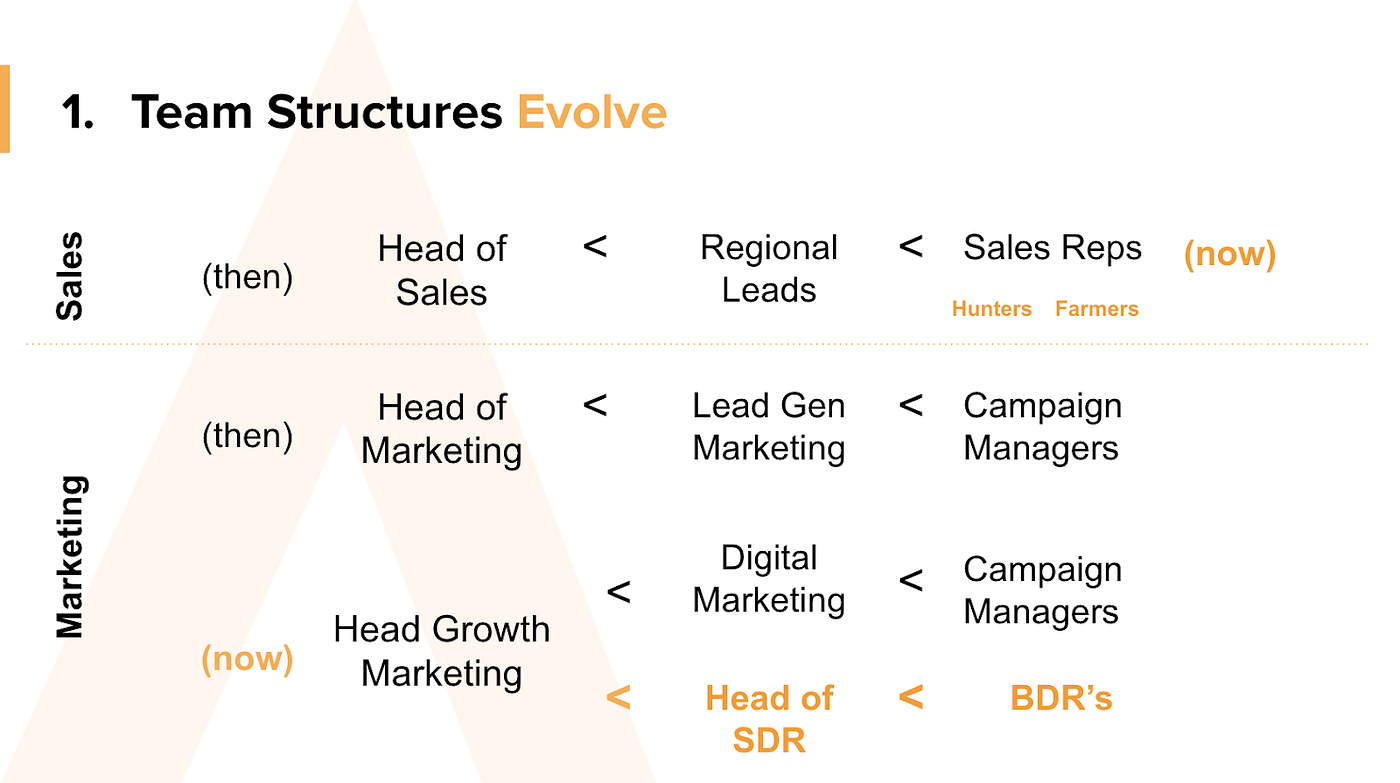
Marketing and Sales Team Structures
Sales: It’s always easy, you grow a sales team as and when we have the opportunity to extract more from a sales territory. You end up slicing the cake vertically for deeper focus as against covering a larger area when you are starting off. As you grow your business, you also have to have hunters and farmers to successfully execute a land and expand strategy.
Marketing: For the rest of the blog, I shall talk about marketing only in the context of lead gen and growth marketing. To have a better sync, for SMB marketing to be successful, it is best to mimic a sales org, but that’s not going to be possible instantly as you start off. As you start off the business of lead gen, your only aim is to generate leads, and there are 2 important teams- Digital marketing (if you are in the business of inbound marketing, wanting to scale your share in your business category) comprising of SEO teams (you don’t want to burn money from Day1) and a paid marketing team to accentuate your SEO efforts. As you grow your business, it’s best suited for BDRs in the SDR org to be a part of marketing. More about it soon down.
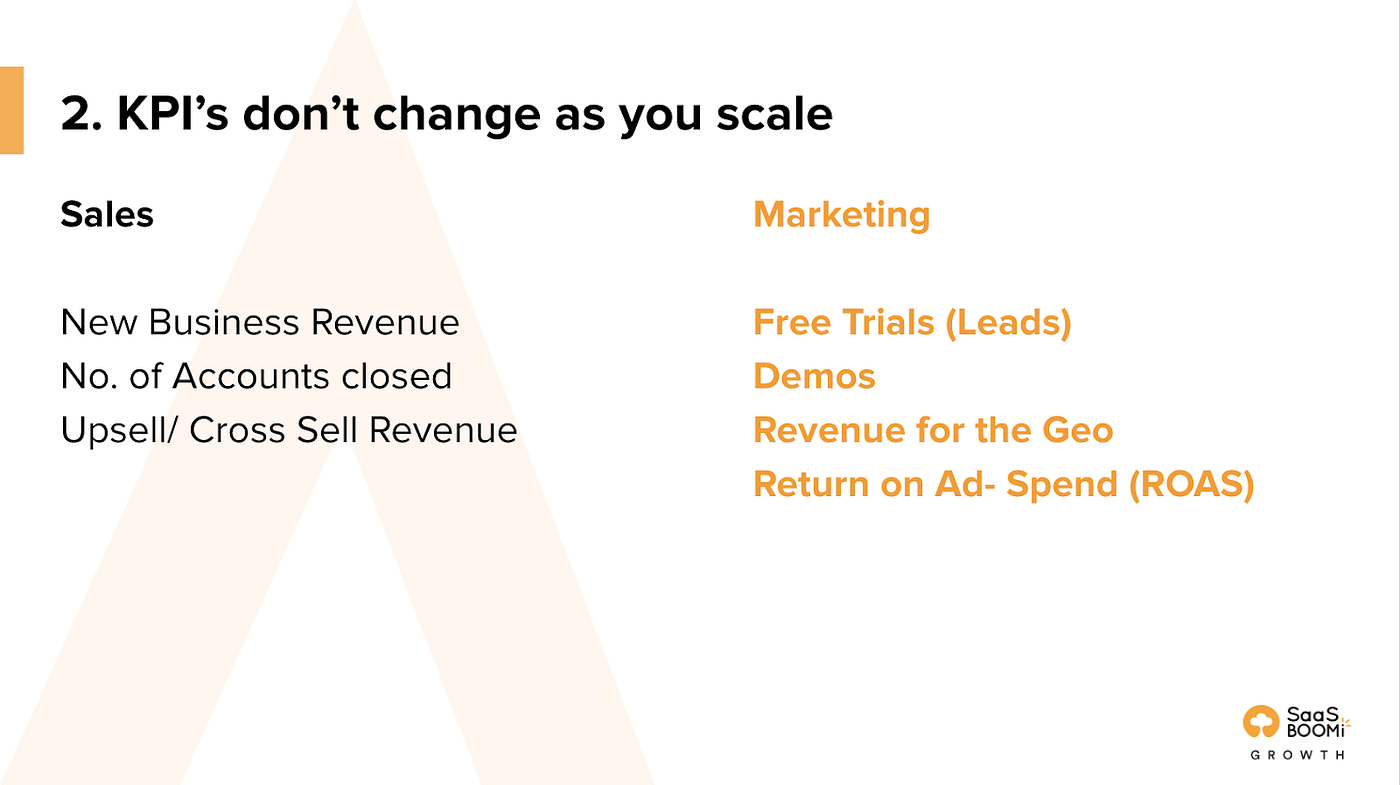
Sales and marketing Performance Indicators don’t change
“Revenue solves all known problems” — Eric Smith
Sales: It’s all about MRR in an inbound SMB business. The teams are measured monthly on the $$ that they bring to the bank and the number of logos acquired. As you acquire more logos, you also have an opportunity to cross-sell and upsell subscriptions of your product(s).
Marketing: We were very clear on what a North Star metric for for marketing — Free Trials. Choose your North Star metric that propels your sales. It could be demos, or someone filling up the contact us form- but that should be the sacrosanct metric every marketer should be measured against. The point of conflict been sales and marketing is always the differentiation in success metrics. To speak the common language, make sure your marketing has a good understanding of revenue, and so tag revenue as a soft metric of measurement in the marketing camp as well. It works!
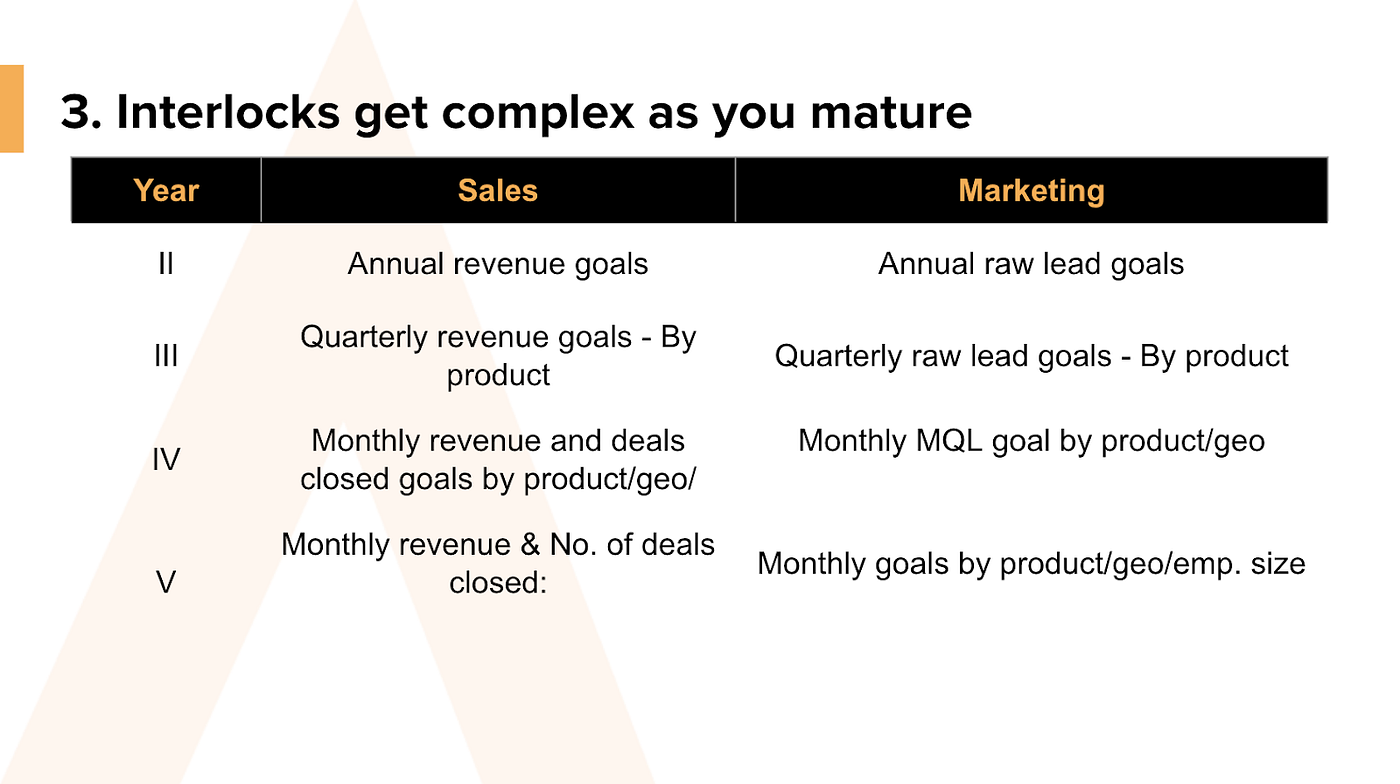
Complexity in Targets matures as you grow older
It’s never easy to get sales and marketing to speak the same dialect, but the language is the same.
When I joined Freshdesk then in 2015, we had the sales and marketing interlock session on the 25th of December to discuss the 2016 plans. As facile as it may sound, the sales multiplied the no. of sales folks with the leads per person (approx 350- free trials then), and arrived at the leads to be generated for 2016. We (marketing) negotiated that based on a couple of year’s history of lead-gen and arrived at a “mutually agreeable” leads to be generated, but as you are experimenting, and setting up systems, such planning is thrown out of the window. When the planned revenue is achieved, everything may sound “well planned”. As we grew in our 10th year of operation,
Sales: continue to plan for monthly revenue, but the complexity added are by:
- Product
- Geo
- New Revenue
- Farming
- Employee. size
Marketing: has got to sing the same song. So the cookie crumbles by:
- MQL’s
- Demo requests
- White paper downloads
- CPLs
- English vs Language websites’ inbound interests
Inbound Marketing Sales & Marketing funnel
The traditional marketing funnel has evolved from companies finding customers and running mass media campaigns to generate awareness and interest to customers finding companies through search and other means. In other words, the role of marketing in B2B SaaS has evolved from being responsible to create awareness and interest to now going a couple of steps deeper in the funnel to become a demand center that’s good at inbound marketing.
So, where does that “hand-shake” happen?
Earlier, it was the job of the marketing to fill the top of the funnel- create awareness, and pique the interests of a larger audience, and those interested will automatically go down the funnel. SaaS marketing has changed. It is now the responsibility of the marketing to take this lower down the funnel by doing enough research on the prospect, and after an evaluation, an SQL is born. It is here when the sales team shakes hands with the marketing team. Hence, as you may have noticed, the BDR’s belonging to an SDR team report to the marketing team, and not the sales, as this also enables proper marketing attribution- which in itself is a separate topic of discussion.
Read more about this here.
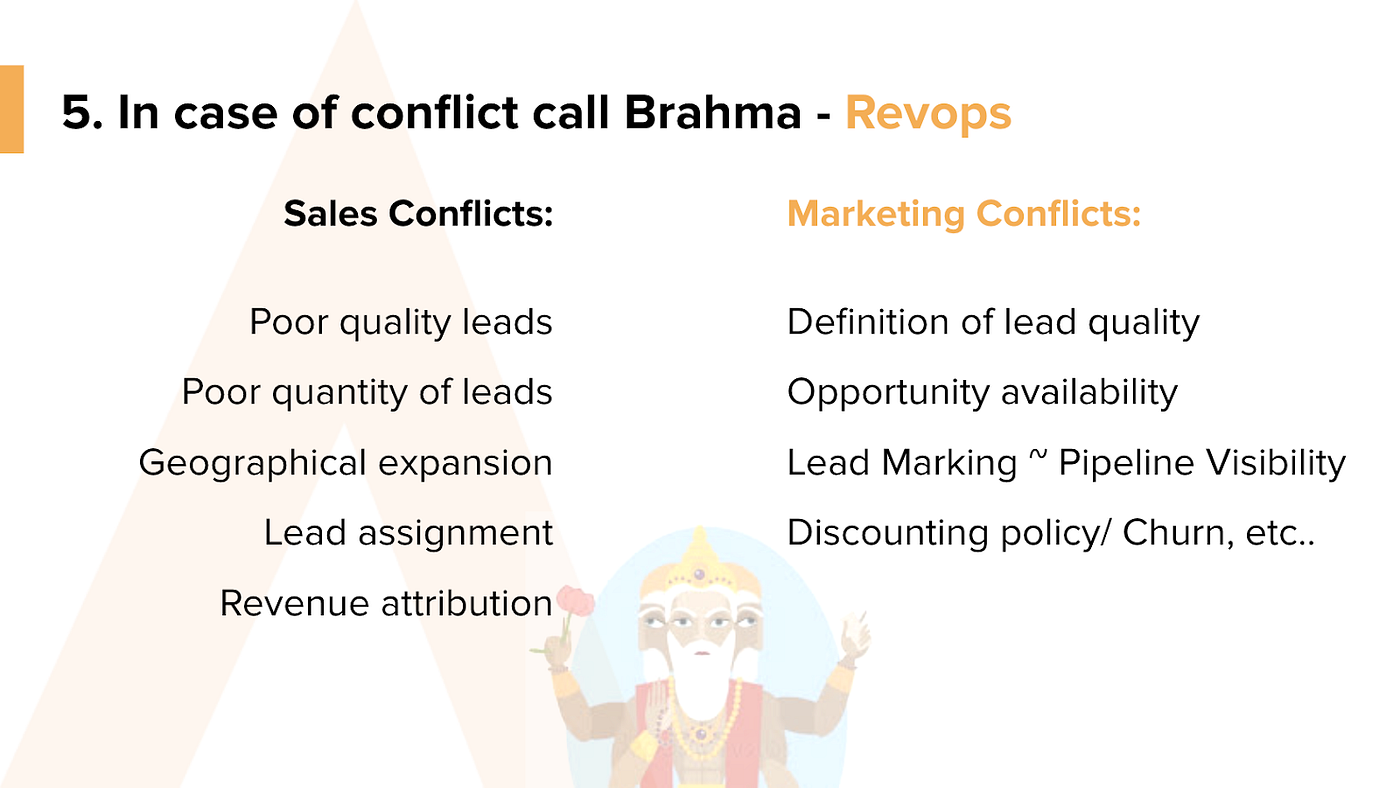
Ares of conflict between sales and Marketing
A relationship without conflicts is a farce, and sales and marketing teams are no different.
As you may see from the above illustration, these are the most common areas of conflict between sales and marketing. These conflicts are great to have, don’t even try to put a full stop to end these conflicts. The day when your sales leader says he/she’s happy with the leads, or when your marketing feels that there is no other opportunity to expand campaigns, let me tell you the business is not in the right hands. But till then, please feel free to introduce your Bhrama (sales/ revenue ops)- a CEO’s trustworthy aide who does a great balancing act. As a startup CEO, you are often caught up between sales & marketing conflicts and lean towards the sales (and rightly so, as revenue is a north star indicator of success), but the marketing folks may be doing a great job of targeting the right audiences through the funnel.
As Naven (the Brahma of Chargebee) aptly put it, a cadence between Sales & Marketing is successful when discussing the rule of three. (Slides borrowed from Naven KY):
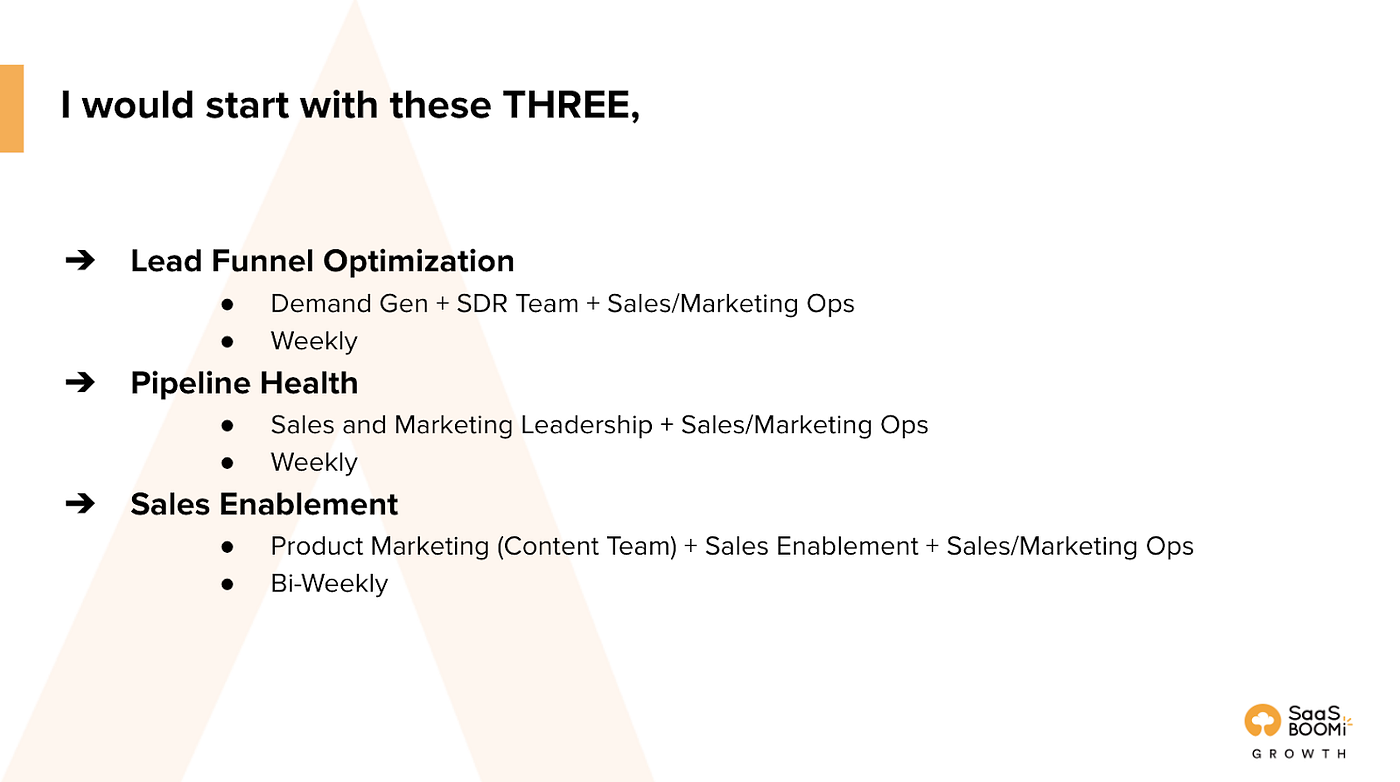
Source: Role of Sales Ops by Naven KY
And, finally,
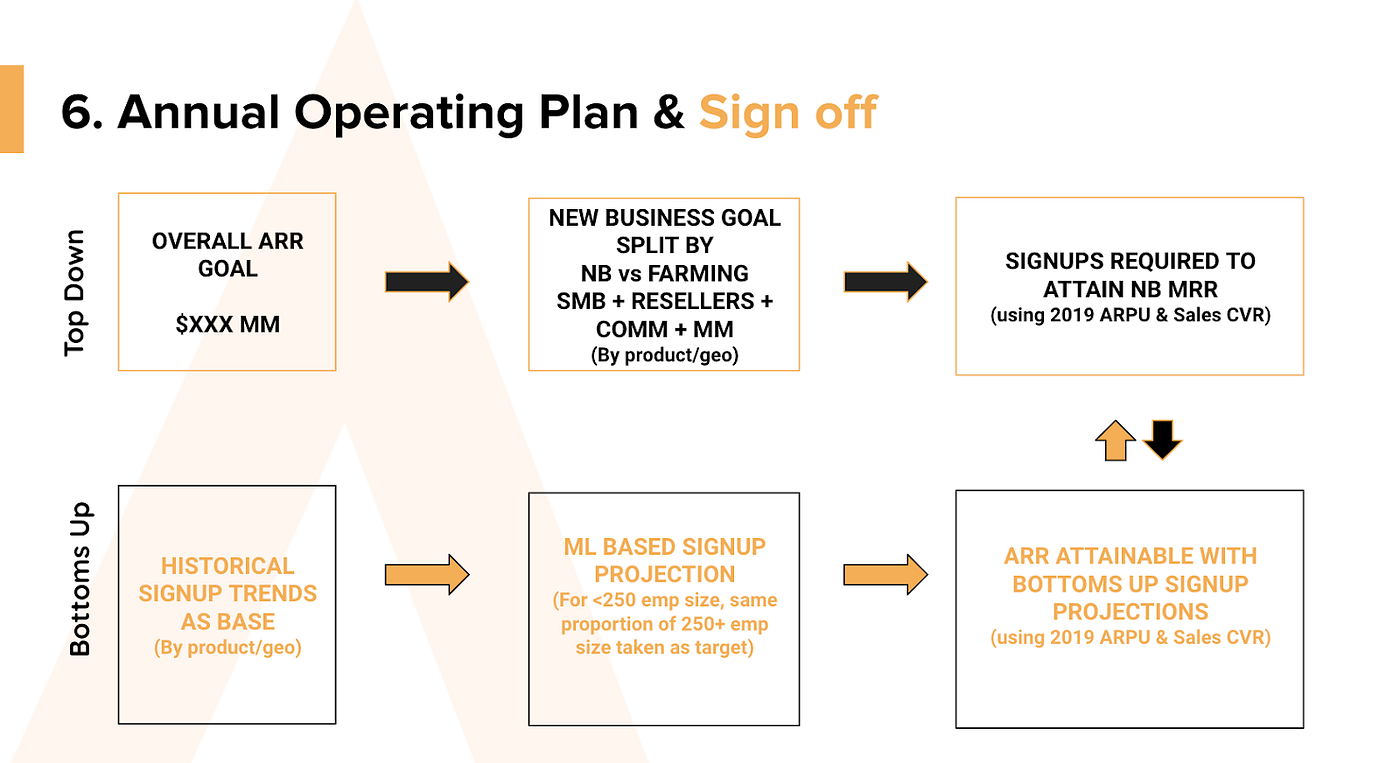
It takes eons to get a sign-off between Sales and Marketing, and we have so far been successful by doing a both- top-down and bottom-up approach to our annual operating plans (AOP). There is always an opportunity to grow XX times YoY, but there are also constraints. A well-executed AOP takes into account all the constraints while still looking at doubling down on areas of opportunity.
A successful sign-off has the following ingredients well-cooked:
- Clear definition of new revenue to be achieved
- Geographies that business thinks it needs to double down on based on opportunity
- All products cannot grow at the same rate. APRA’s have to.
- Revenue broken down by hunting and farming
- Revenue per lead. It is important to define what a lead is, and look at historical trends of this metric along with the website conversion rate.
- Defining the sales conversion rate by every geography
- Differentiation between marketing channels that drive direct leads versus channels that may assist conversions.
And yes, Brahma is the owner of the process after listening to both sales and marketing. He always has the last word, and that defines your sign-off!































